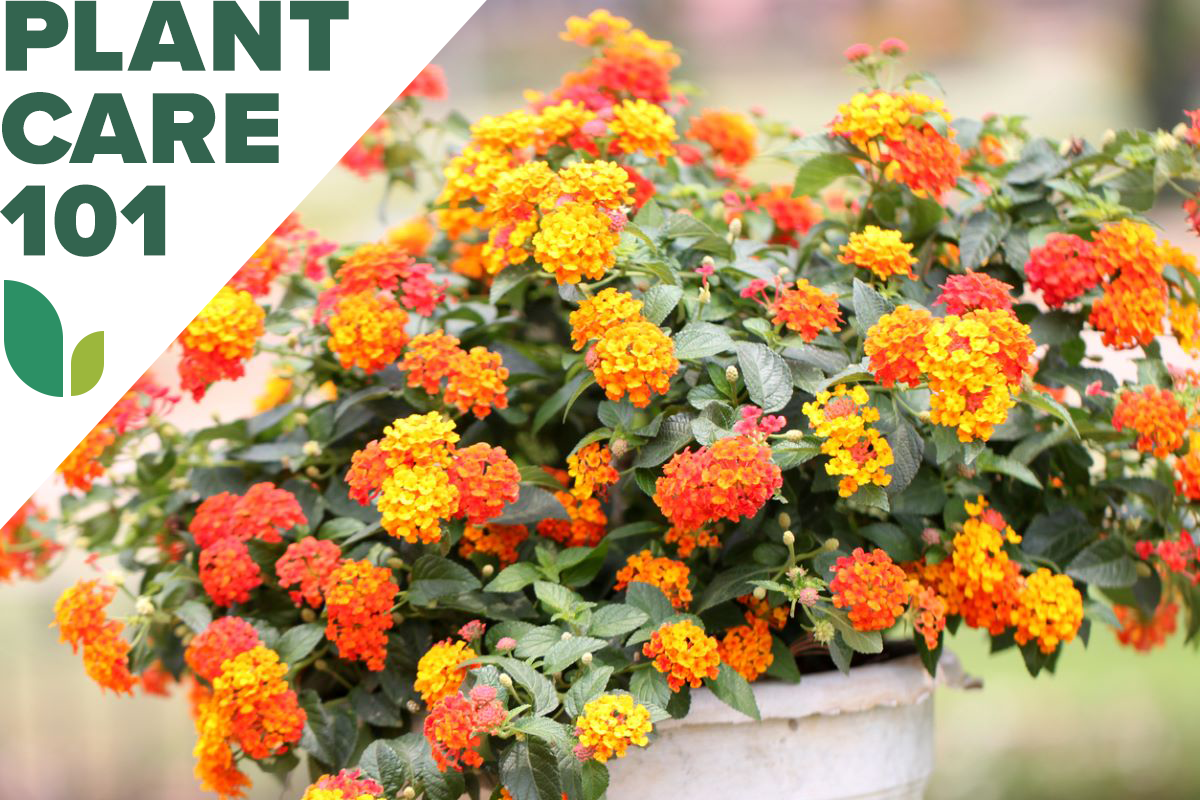We may earn revenue from the products available on this page and participate in affiliate programs. Learn More ›
Popular for its ability to produce clusters of long-lasting flowers year-round in frost-free zones, lantana also can become invasive in those zones due to its vigor. Fortunately, sterile cultivars keep lantana in bounds and blooming since they never go to seed.
North of USDA Zone 8, those cultivars serve as annuals, though the toughest variety, Lantana ‘Miss Huff,’ may be hardy to Zone 7. Lantana care is easy, since the plant performs best under somewhat dry and less-than-fertile conditions, so mild neglect shouldn’t faze it. And it’s versatile, able to grow in containers, as a shrub, ground cover, or lantana tree via topiary.
RELATED: Master Easy Kalanchoe Plant Care for a Blaze of Colorful Blooms Year After Year
Growing Lantana at a Glance
Common Name: Mountain sage
Scientific Name: Lantana spp.
Hardiness Zone: USDA Zones 8 through 12
Soil: Well-draining, slightly acidic, moderately fertile
Light: Full sun
Water: Moderate
Food: Balanced plant food
Propagation: Seeds or softwood cuttings
Safety: Toxic
Lantana Characteristics
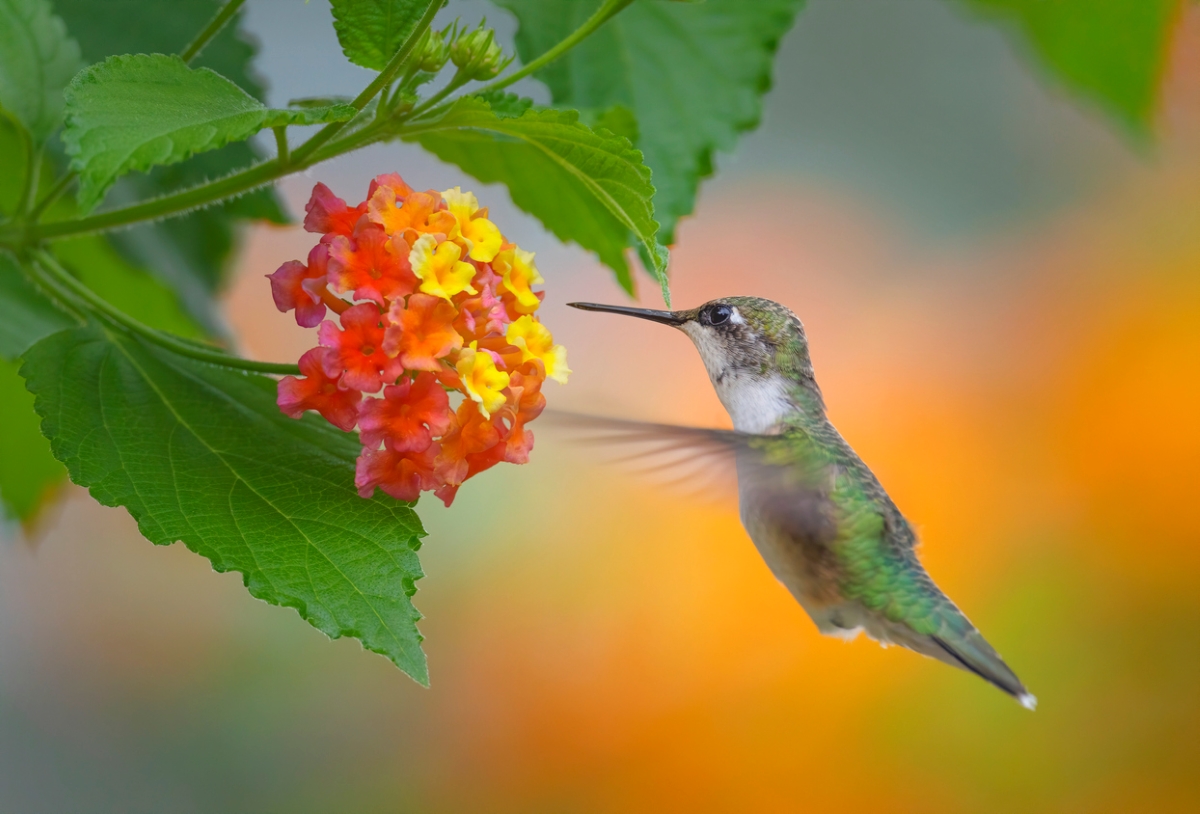
Its origin in tropical regions of the Americas and South Africa means that lantana is a perennial in USDA Zones 8 through 12. The plant often will die back to the ground over the winter in zones 8 and 9, remaining reliably evergreen just in zones 10 through 12. It’s exclusively an annual in colder regions.
Shrubby types can grow to a height of 6 feet, while lantana ground cover varieties seldom surpass 2 feet. A lantana flower is a verbena-like cluster of small tubular blooms, with the older ones on the outside often a different color or colors than those in the middle.
The plant’s scratchy, hummingbird-attracting foliage has a peculiar scent, which is sometimes described as something in between citrus and gasoline. Fortunately, that odor is only released when the leaves are crushed. Lantana has been proven to be about 30 to 40 percent effective in repelling mosquitoes, and it often deters deer and rabbits, too.
Recommended Lantana Varieties
Plenty of lantana varieties and cultivars are available from plant sellers. Its hummingbird-attracting multicolored flowers are popular and easy to find.
- Common Lantana (Lantana camara): One of the most invasive lantana varieties, this berry-producing upright type can grow to 6 feet tall with 2-inch clusters of yellow, orange, and red blooms.
- Miss Huff Hardy Lantana (Lantana camara ‘Miss Huff’): Considered the hardiest lantana, this sterile cultivar of L. camara tops out at 6 feet tall and wears bright yellow, orange, and pink flowers.
- Mozelle Lantana (Lantana camara ‘Mozelle’): This pastel version of Miss Huff is also sterile, but it offers more muted shades of yellow, orange, and pink.
- Trailing Lantana (Lantana montevidensis): Named for the capital of Uruguay (and also known as L. sellowiana), this trailing type grows to a height of 2 feet with 1- to 1 ½-inch clusters of lavender flowers followed by berries.
- Texas Lantana (Lantana urticoides): This mounding and berried type boasts flowers in blazing shades of yellow, orange, and red.
RELATED: 20 Perennials to Plant in the Fall for Beautiful Spring Flowers
Planting Lantana
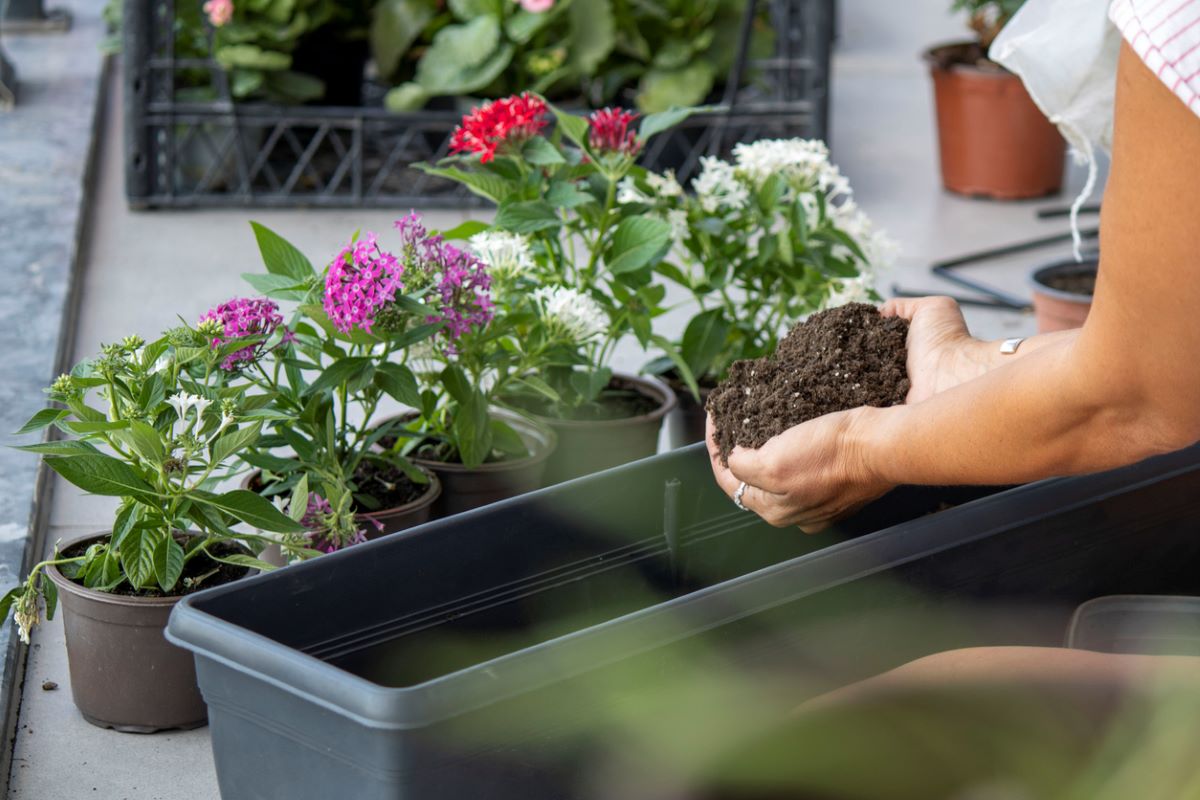
When adding lantana landscaping to your property, keep this heat-loving plant’s preference for warm temperatures in mind.
When is the best time to plant lantana?
Set out a purchased lantana plant (or one that you’ve wintered indoors) after any danger of frost has passed and the soil temperature has risen above 60 degrees Fahrenheit, about 2 weeks after your zone’s last frost date. During those 2 weeks, expose the plant gradually to outdoor conditions before you place it in the ground.
Where can lantana grow?
Choose a location in full sun with well-draining, slightly acidic, and only moderately fertile soil for your lantana, since high fertility might encourage lush foliage growth with few blooms. Avoid soggy ground, which can cause root rot in this plant, or shady conditions that might make your lantana mildew. However, the plant is tolerant of salty soils.
How do you plant lantana?
When planting lantana, keep in mind that its growth doesn’t generally take off until the weather heats up and follow these steps.
- Incorporate balanced fertilizer such as 10-10-10 into the top few inches of soil at 4 ounces per 25 square feet. Use twice that amount for an organic 5-5-5 formula.
- Water your lantana before removing it from the pot.
- Dig a hole and set the plant at the same level it grew in the container, untangling the roots if necessary or slashing a matted root ball on both sides with a sharp knife.
- If you have more than one lantana, space the plants 1 foot apart.
- Keep the soil lightly damp until the lantanas become established.
Can you grow lantana in containers?
Lantana may actually grow better as a full-sun container plant than it does in the ground, since a pot provides better drainage—as long as it has holes in its base to allow excess moisture to leak out. Plant lantana in pots with 8- to 12-inch diameters for a large lantana and fill it with a porous potting mix, such as a cactus formula.
RELATED: Master Indoor Bird of Paradise Plant Care and Your Green Thumb Will Soar
Watering Lantana
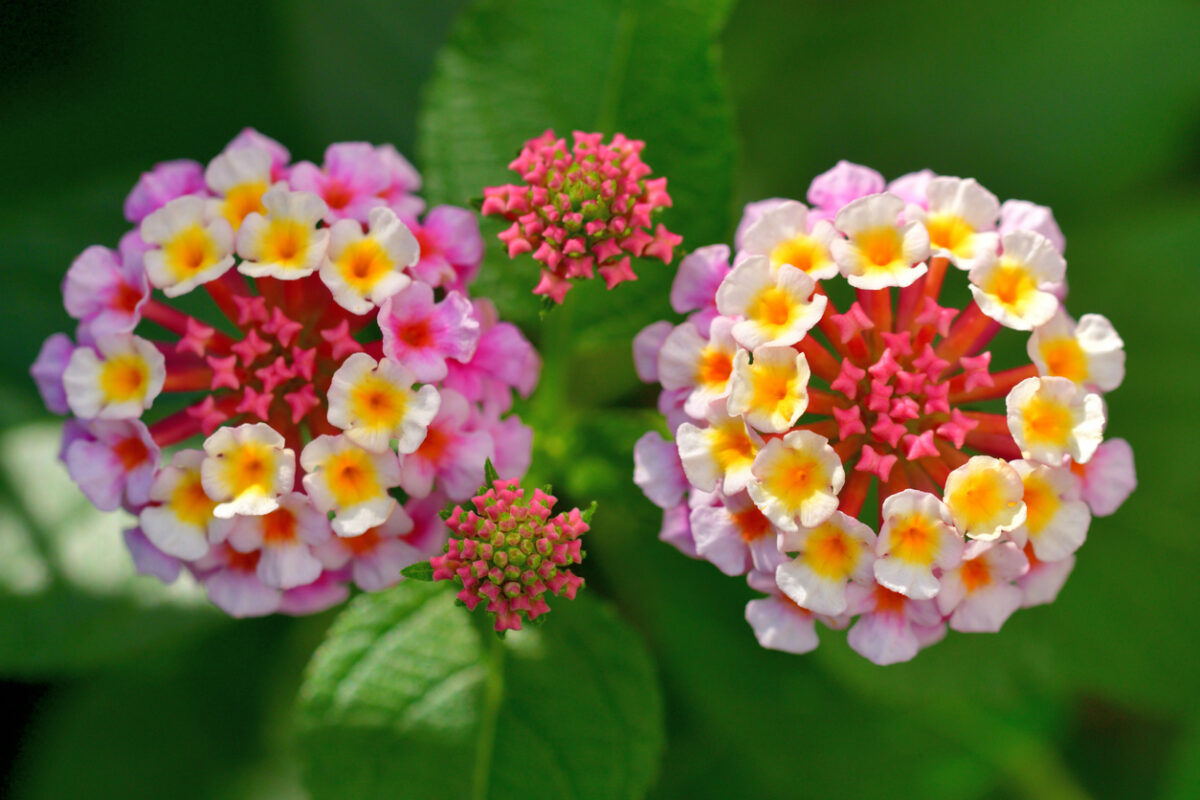
Although lantana is somewhat drought-tolerant once established, you’ll want to keep the soil around a recently set-out plant lightly moist until it begins to grow again. Afterwards, try to ensure that it receives at least 1 inch of water per week, either from rain or irrigation, but avoid splashing the foliage.
Water a potted lantana when its soil is dry 1 to 2 inches beneath the surface. During the heat of summer, this may necessitate you watering it daily, but check to make sure that its container has drainage holes, so water doesn’t collect around the plant’s roots.
Fertilizing Lantana
A lantana plant growing in the ground generally should receive most of the limited nutrients it needs from the soil. If you add a little fertilizer to that soil when you set the plant out, as detailed in the instructions above, you shouldn’t need to give it any more during the growing season.
Potted lantanas, on the other hand, will lose many of their nutrients to leaching. Therefore, fertilize them about once per month during the growing season with a balanced liquid plant food at the rate specified on the package.
Pruning Lantana
In spring, cut back evergreen lantana plants, or those intended to be moved outside from the indoors during summer, to between 6 and 12 inches tall to prevent them from becoming woody and leggy as they age. In zones where lantana is a perennial, but frost kills the foliage back to ground in autumn, trim off the dead foliage and mulch the plants to protect their crowns.
Lantana pruning should include the deadheading of withered flowers from species forms of the plant to prevent their going to seed, which can end their blooming.
RELATED: The Dos and Don’ts of Pruning a Bush
Propagating Lantana
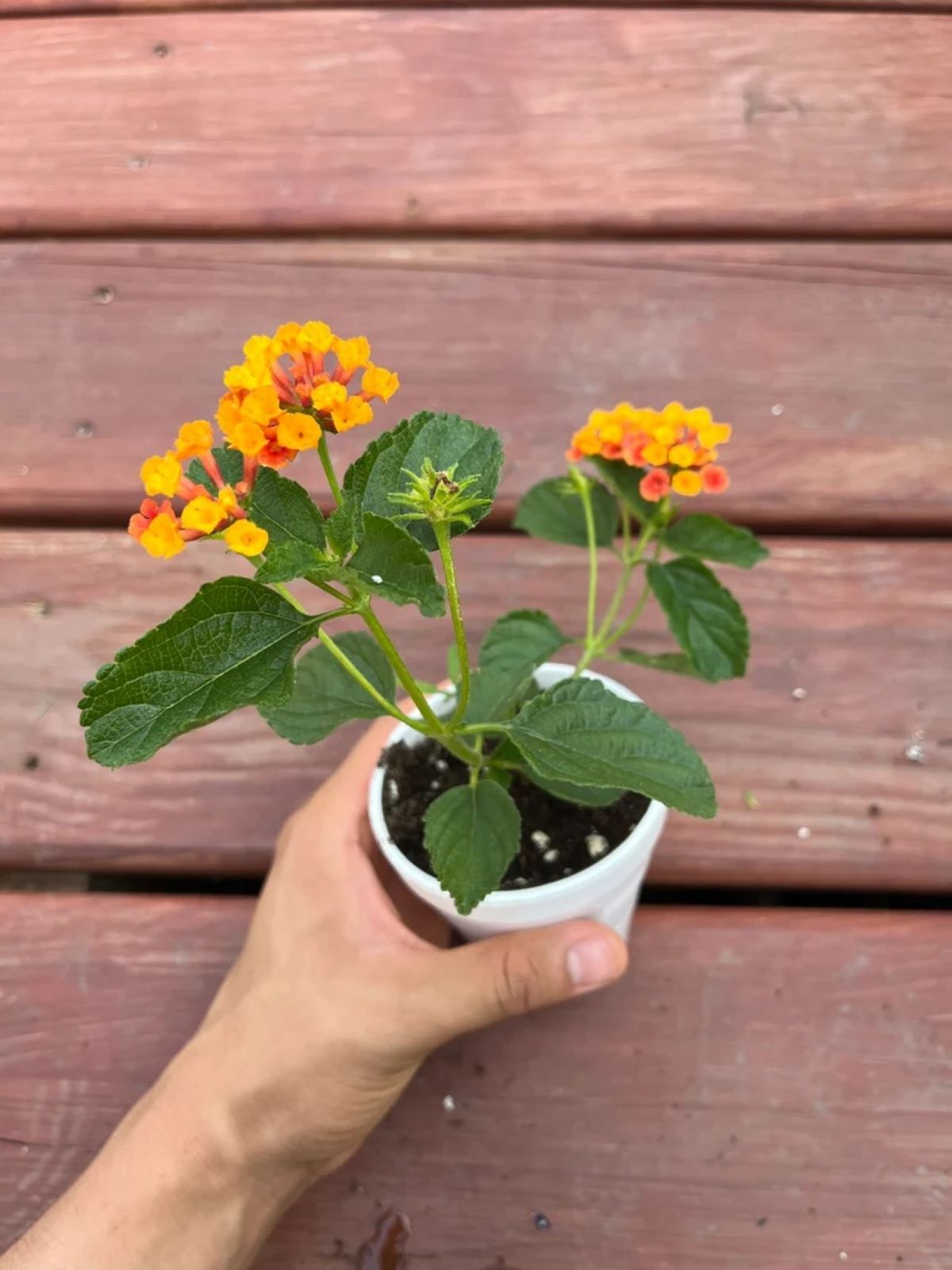
Only lantana species come true from seed; cultivars will not. After removing any fruit pulp from lantana seeds, soak them in lukewarm water for 24 hours before sowing them about ⅛ inch deep in a damp and sterile seed starting mix. Keep the container at 70 to 75 degrees Fahrenheit until the seeds germinate in 2 to 8 weeks.
Alternatively, take 6-inch softwood cuttings during summer, remove the lowest leaves, and insert the base of each cutting into sterile soil with the lower leaf nodes covered. Keep the soil lightly moist and the cuttings shaded until they root.
Safety Considerations
In addition to sometimes irritating sensitive skin, lantana plants and their unripe berries are toxic to people, pets, and livestock, with the latter sometimes contracting liver disease after they graze on the foliage. Fortunately, they rarely do so—perhaps due to lantana’s odor—but you’ll want to keep the plant out of grazing pastures.
Also, grow only sterile forms of lantana to avoid attracting young children to the peppercorn-size black berries. Although some sources indicate that the fully ripe fruits are edible, differentiating between those and toxic unripe berries can be difficult—and dangerous.
Potential Pests and Diseases
Lantana plants grown in the South may suffer from lantana lace bugs, which cause patterns of pale spots on top of the leaves. If your lantanas appear to be covered with black powder instead, look for whiteflies, which often are responsible for that sooty mold. Under-watered plants may become infested by spider mites, which cause stippling on the foliage.
If strong streams of water don’t knock the insects off, try spraying the plants with insecticidal soap instead, applied in the early morning before the weather heats up. Repeat those applications once per week until the problem has been successfully washed away.
Preparing Lantana for Winter
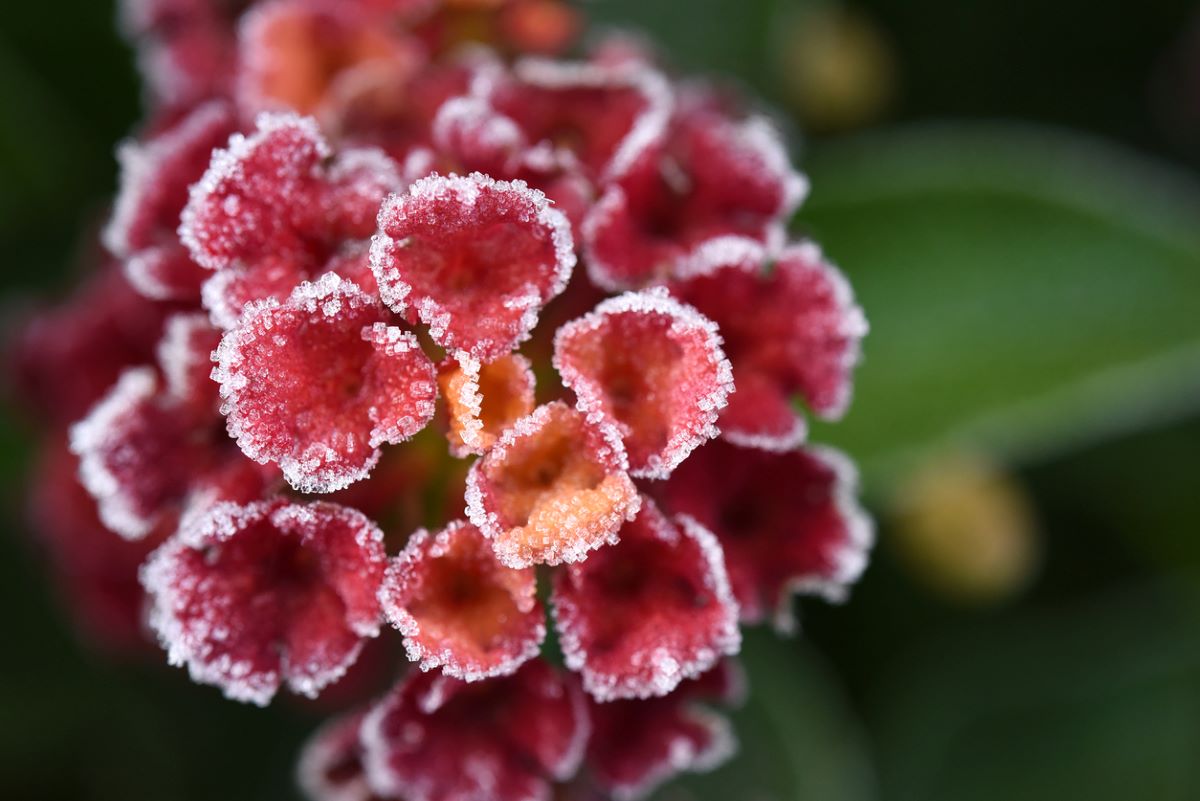
In zones where lantana is hardy but dies back to the ground during winter, remove the dead foliage after it does so, and mulch the crown of the plant with a couple inches of shredded bark.
In more northern regions, dig the plant up before the first frost and place it in a pot filled with fast-draining potting soil, like cactus mix. Set the pot in a dim location with temperatures between 50 and 60 degrees Fahrenheit, and water the soil only enough to keep it barely moist to induce dormancy. Don’t be alarmed if lantanas drop leaves while being overwintered.
Looking for more sun-loving flowers? Check out our guides on growing dahlia, hibiscus, and milkweed.

